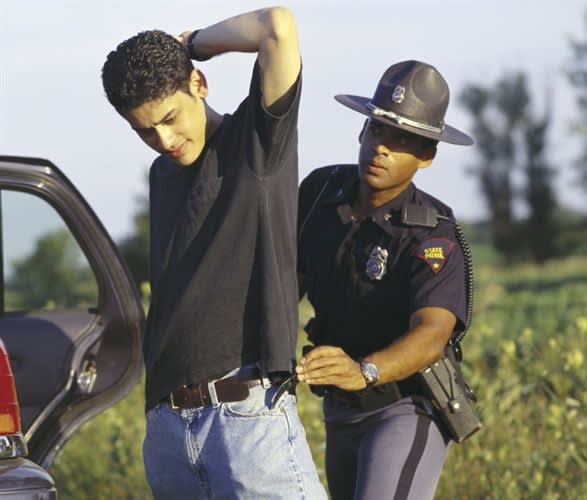Pay very careful attention to chains or cords around the subject's neck. Always remove them and check for any attachments such as razor blades.
While keeping an eye on the individual for obvious irregularities, such as bulges under clothing, run your hands along the outside of his or her clothes. Empty the pockets. Pat folds in the clothing and squeeze them gently to probe for hidden items.
Now continue down the subject's front, sides, and back. Pay special attention to the armpits, small of the back, and groin area. Experience has demonstrated that the groin is often one of a veteran criminal's favorite hiding places for weapons or contraband. He assumes that many officers will be reluctant to search closely in the crotch of another man's pants.
Inventory and bag the items recovered during the search and place them out of the subject's reach. Separate the subject from all pocketknives, pens, lighters, belts, ties, keys, medications, and footwear. Be sure to check shoes and boots for hidden compartments or weapons. The contents of wallets should be tallied, not only to protect the officer from allegations of theft but also to reveal hidden razor blades, needles, and bindles of drugs.
And don't ever rush through the search process. It simply will take as long as it takes to do the job right. Your life could depend on it.












